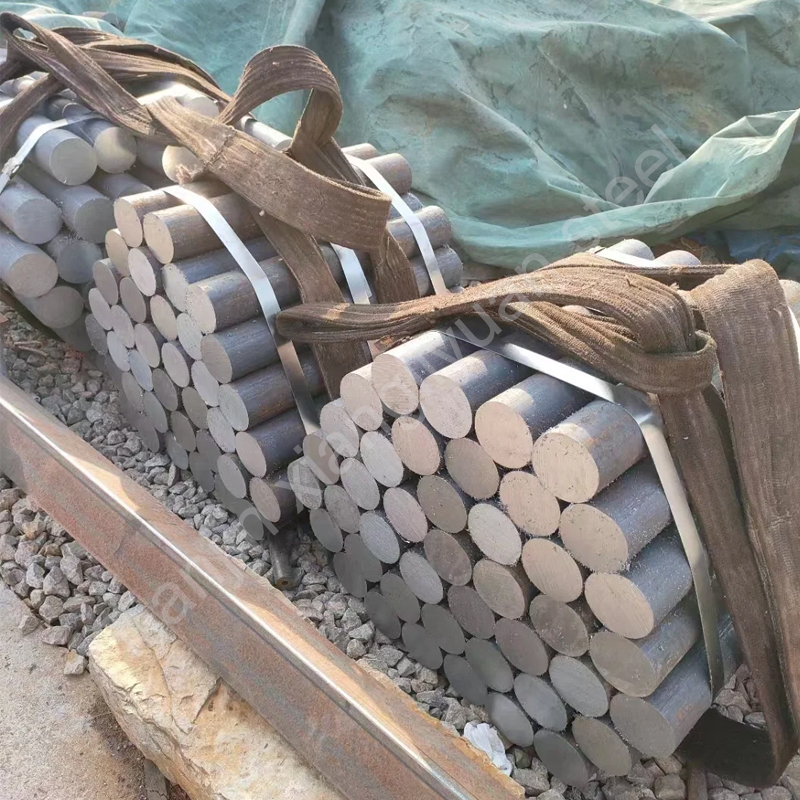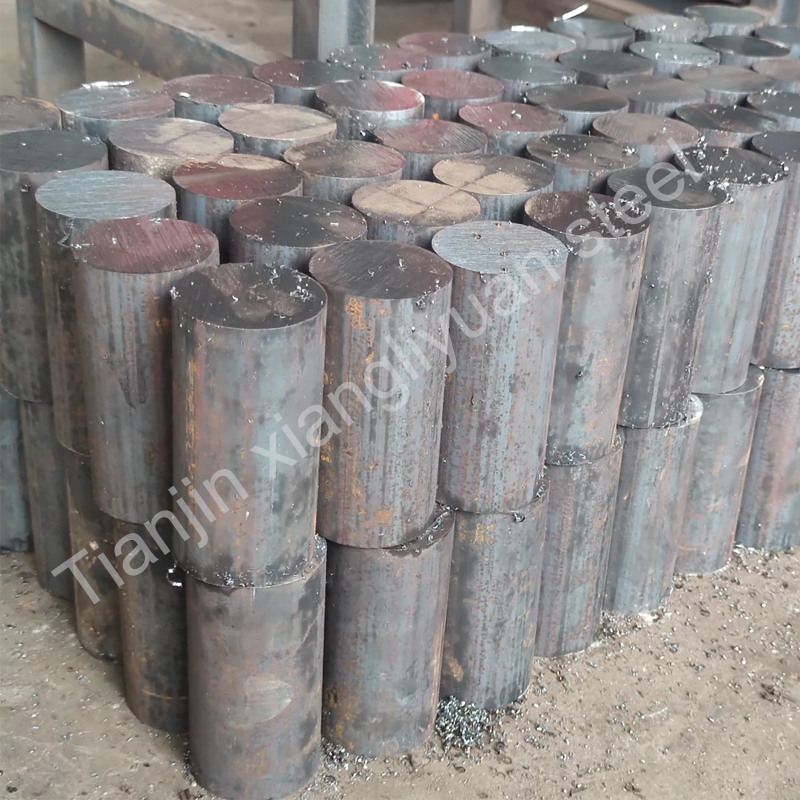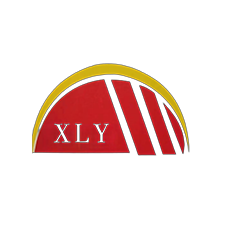Round steel bars, also known as steel rods or round bars, are cylindrical metal products widely used across industries for their strength, versatility, and cost-effectiveness. Unlike square steel bars (square steel), which have flat edges, round steel bars offer smooth surfaces and uniform diameters, making them ideal for machining, construction, and fabrication. In this guide, we’ll explore the materials, manufacturing processes, international standards, dimensions, and applications of round steel bars to help you choose the right product for your project.
1. Materials and Steel Grades
Round steel bars are available in three primary material categories:
A. Carbon Steel Bars
Grades: ASTM A36, 1018, 1045, C45 (EN), S45C (JIS)
Properties: Affordable, excellent machinability, moderate strength.
Applications: Shafts, bolts, gears, and general-purpose components.
B. Alloy Steel Bars
Grades: 4140, 4340, EN19, 8620, 52100
Properties: Enhanced strength, wear resistance, and heat treatability due to chromium, molybdenum, or nickel content.
Applications: Automotive parts, aerospace components, and high-stress machinery.
C. Stainless Steel Bars
Grades: 304/304L, 316/316L, 410, 420, 17-4PH
Properties: Corrosion resistance, hygiene, and aesthetic appeal.
Applications: Food processing equipment, medical devices, marine hardware.
2. Manufacturing Processes
Round steel bars are classified based on production methods:
A. Hot-Rolled Steel Bars
Process: Heated above recrystallization temperature and shaped through rollers.
Features: Scaley surface, wider tolerances, cost-efficient.
Uses: Structural frameworks, railroad components.
B. Cold-Drawn Steel Bars
Process: Room-temperature drawing through dies to refine dimensions.
Features: Smooth finish, tight tolerances (±0.001″), improved strength.
Uses: Precision shafts, hydraulic cylinders, automotive systems.
C. Forged Steel Bars
Process: Shaped under high pressure for superior grain structure.
Features: Exceptional durability, fatigue resistance.
Uses: Heavy machinery, mining equipment.
3. International Standards
Round steel bars comply with regional specifications:
| Region | Standards | Key Grades |
|---|---|---|
| USA | ASTM A36, ASTM A108, ASTM A276 | 1018, 4140, 316L |
| Europe | EN 10025, EN 10083, EN 10088 | S235JR, 42CrMo4, X5CrNi18-10 |
| Japan | JIS G3101, JIS G4051 | SS400, S45C, SUS304 |
| China | GB/T 699, GB/T 3077 | Q235, 40Cr, 0Cr18Ni9 |
4. Standard Sizes and Dimensions
Round steel bars are stocked in the following sizes:
|Diameter: 5mm to 500mm (0.2″ to 20″)
Length: 3m to 6m (10ft to 20ft) standard; custom cuts available.
Tolerances:
Hot-rolled: H9 to H11 (±0.1mm to ±0.3mm)
Cold-drawn: h8 to h9 (±0.05mm to ±0.1mm)
5. Applications of Round Steel Bars
Round steel bars are indispensable in:
Construction: Rebar (ASTM A615), anchor bolts, scaffolding.
Automotive: Axles, gears, engine components (alloy steel 4140).
Machinery: Pump shafts, couplings, conveyor rollers (cold-drawn 1045).
Energy: Wind turbine shafts, oil drilling tools (forged 4340).
Consumer Goods: Kitchenware, furniture (stainless steel 304).
Round steel bars are a cornerstone of modern manufacturing, offering unmatched adaptability across materials and processes. Whether you need corrosion-resistant stainless steel rods for marine environments or high-strength alloy bars for aerospace, understanding grades, standards, and sizes ensures optimal performance. For premium round steel bars tailored to ASTM, EN, or JIS specifications, TIANJIN XIANGLIYUAN STEEL CO., LTD delivers precision and reliability. Contact us today for a quote!



